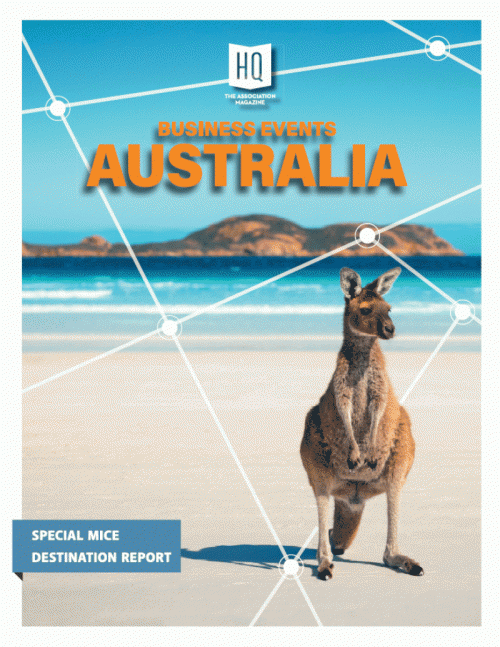Moving from Competition to Coopetition Should Come Naturally to Associations

The association executive, Mark Levin, writes about the movement of coopetition on business meetings.
So much has changed in the past year that it is hard to remember what was ‘normal’ before. It looks like it might well-be late in 2021 before we are approaching anything close to pre-pandemic normalcy. Of course, there is no way that the global health crisis can really be considered as having a positive effect on anything. However, some interesting (and perhaps valuable) trends that this crisis created have begun to show some signs of a positive impact in the near future.
Without exception, associations spent the last year dealing with some major challenges: reduced human and financial resources, change management, meeting and convention chaos and cancellations, remote staff and ‘virtual’ everything... and many other challenges unique to the association environment. It is this commonality of concerns that also provides opportunities for the future.
One of the biggest ongoing concerns of most associations is staying ahead of their competitors. This competition may be for members, for money, for credibility, for influence, for conferences, practically anybody.
What would happen if these competitors found ways to work together to create win-win situations for everyone? What if these organisations moved from competition to coopetition?
Confession: I had to search the word ‘coopetition’, too. Here is what Google says: “Coopetition is the act of cooperation between competing organisations; i.e. organisations that engage in both competition and cooperation are said to be in coopetition”.
I like that. It describes what competing associations have done reluctantly on a limited basis for many years and defines it as a strategy, not an activity. For example, many competing associations will work together on a common threat, such a piece of legislation, but only when necessary. The rest of the time they are trying to out-do each other.
It’s time to move on. It’s time to stop believing that doing things bigger or better than another association in your field is a win for your organisation. Your members, sponsors, suppliers, supporters and other stakeholders do not care who wins or who gets the credit. They care about getting the best value for their investment in your organisation.
So, let us look at some places where coopetition could serve for the greater good in today’s and tomorrow’s association community:
- Education. Several of the fiercest competitors in the construction industry in the US fought for decades over whose training programme was better. The cost of duplication was staggering, until they collectively established a third-party educational Institute for the entire industry.
- Conferences. Are there chances for trade shows to work together to book facilities and destinations back-to-back, and negotiate from that kind of strength? What about making selected speakers and programmes at your virtual conferences available to members of other associations?
- Branding. Isn’t each organisation supposed to create its own brand? Sure, but that’s about the organisation, not the industry or the profession or the destination. Why not pool the resources of several groups to create a better understanding of the value of a career in your field, or the impact your industry has on the economy of your community?
- Influence. This might be the best opportunity to be in coopetition. When associations in the same field combine resources to change their industry or profession for the greater good, influencers will want to work with them. It is counterproductive to have multiple organisations claiming to represent the voice of the industry.
‘Coopetition’ may seem like an unusual word, but the concept is one that is critical to accomplishing organisational goals. The people, organisations and institutions we want to attract to support us in our mission want to know if we are willing to partner with others to attain our goals.
Show them that coopetition is part of your organisation’s culture.
.jpg) CAE and CSP Mark Levin has three decades of experience as an association executive. He is also an internationally known speaker and consultant to the nonprofit and association community. He currently serves as executive vice president of the Chain Link Fence Manufacturers Institute, an international trade association, and as president of B.A.I., Inc., his speaking and consulting firm. He is also the current president of the National Speakers Association National Capital Area Chapter.
CAE and CSP Mark Levin has three decades of experience as an association executive. He is also an internationally known speaker and consultant to the nonprofit and association community. He currently serves as executive vice president of the Chain Link Fence Manufacturers Institute, an international trade association, and as president of B.A.I., Inc., his speaking and consulting firm. He is also the current president of the National Speakers Association National Capital Area Chapter.
Other Articles
About Us
Supported by the Union of International Associations (UIA), the International Association of Professional Congress Organisers (IAPCO) and the Interel Group, the global public affairs and association management consultancy, Headquarters Magazines serve the needs of international associations organising worldwide congresses.















